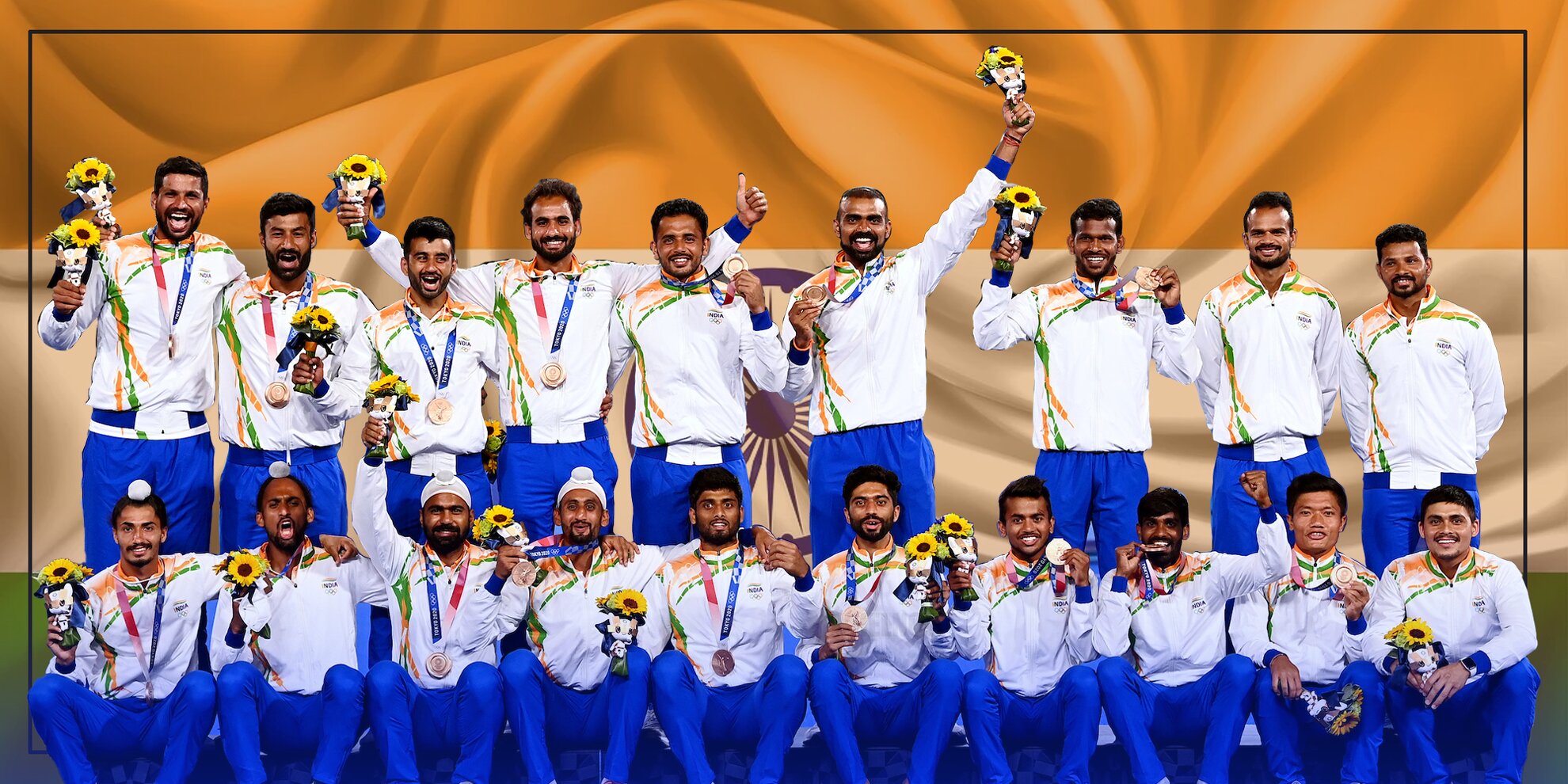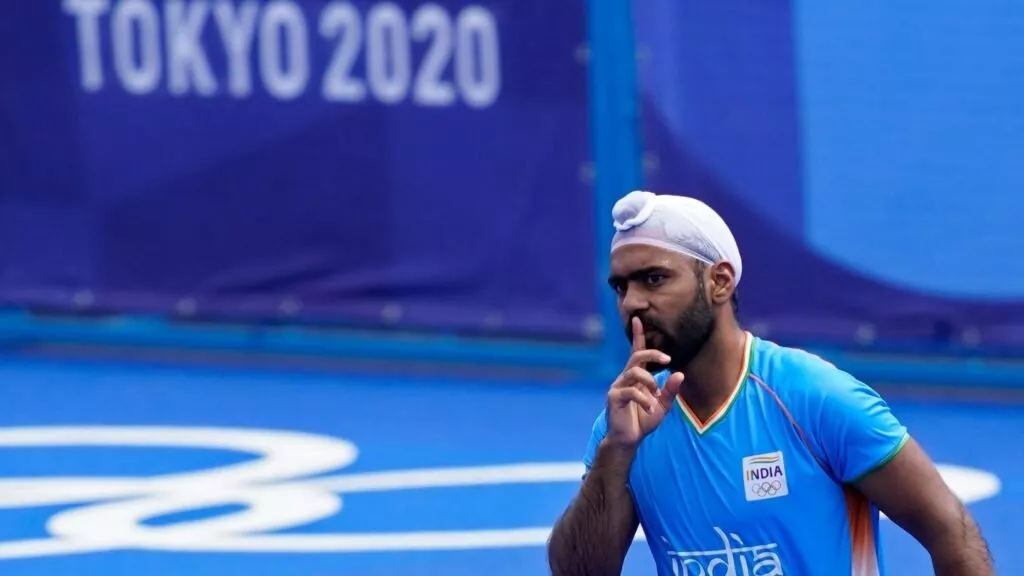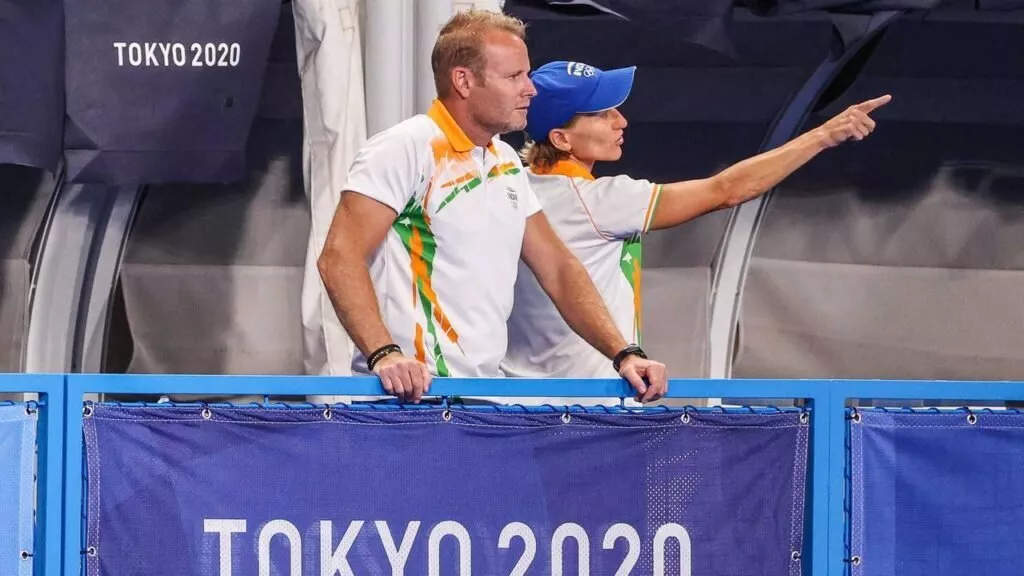How Hockey has been revived in India since 2008 Olympics disappointment

(Courtesy : Hockey India)
The nation won its first medal in hockey at the quadrennial games in 41 years at Tokyo 2020.
Very few countries have dominated a team sport as India has dominated hockey. India had won a total of eight gold medals at the Olympics, the most by any nation. However, since the mid-1980s, the country has suffered a slump. The lowest point arrived when India even failed to qualify for the 2008 Beijing Olympics. That shook the system as it was an unprecedented decline of the country's most popular sport at a certain point of time.
In the last decade or so, several things have been done behind the scenes in a bid to reclaim the glory days of Indian hockey. It all came to fruition when the Indian men's hockey team stood on an Olympic podium for the first time in 41 years. Not just that, but the women's team also performed commendably and was close to replicating their male counterparts.
We take a look at what has happened behind the scenes in a bid to revive Indian hockey in recent years:
Revamped domestic structure

Grassroots are the base for success in any sport. Various initiatives have been taken at the ground level to ensure that hockey continues to remain a popular sport among the youth of the country. It will also ensure that there will be a supply line of players for the various age group of national teams.
The biggest boost came from the young group of players who went onto clinch the 2016 Junior World Cup title. Eight players from that "Class of 2016" were part of India's success at Tokyo 2020. They are Manpreet Singh, Harmanpreet Singh, Varun Kumar, Nilakanta Sharma, Sumit, Gurjant Singh, Mandeep Singh and Simranjeet Singh. These players were a crucial component of both the successes five years apart. The same year, the senior women's team qualified for the Olympic Games after a gap of 36 years.
Buoyed by the success in recent years, the national championships have been restructured. At an executive board meeting in April 2020, it was announced that the annual championships will now take place over three different categories. The Sub Junior, Junior and Senior National Championships will now consist of not only teams from the state member units. It will also have separate sides from public sector/departmental units and academy member units. This will ensure more teams and will encourage more participation.
In addition, the Hockey India Sub Junior and Junior Women Academy National Championship took place for the first time in 2021. This is a step in the right direction and will increase the talent pool for the national teams.
Exposure tours for national teams
In recent years, more and more exposure tours for the national teams have taken place. Despite the COVID-19 pandemic halting the momentum, the senior and junior teams were still out on tours earlier in 2021.
As for the senior teams, it was an opportunity to test their mettle ahead of the Tokyo Olympics. On the other hand, the junior teams had the unique opportunity to play against some of the world's best young players. The senior women's team went to Argentina and later Germany. The senior men's team had successful outings in Europe and Argentina. Whereas, the junior women's team went on a tour to Chile.
This is not something that had happened frequently in the past. If there wasn't any tournament, the Indian teams would rarely venture into a foreign land. However, things have changed recently. Hockey India is putting in more efforts to ensure these happen as there is a realization of the importance of exposure tours.
Development sessions for coaches and officials
In April 2020, Hockey India and Sports Authority of India (SAI) announced the introduction of the Coaches Development Sessions (CDS), as part of SAI’s workshop for coaches. These online education sessions provided high-level knowledge to hockey coaches around the country through video conferencing.
The Coaches Development Sessions were classified into two Coaching Sessions - Level ‘Basic’ Coaching Sessions and Level ‘Intermediate’ Coaching Sessions. Foreign National Team Coaches, Scientific Advisors and Director, High Performance conducted these sessions. This is a crucial step indeed as providing quality knowledge to Indian coaches will mean that it will benefit the young players in turn.
Hockey India has also initiated interactive sessions for Indian Umpires and Technical Officials to improve their officiating knowledge and motivate each other on fitness matters. Notably, two Indian umpires Javed Sheikh and Raghuprasad RV officiated at the Tokyo Olympics. Hence, the focus is not only on the players but also on the coaches and officials.
Changes in training and dietary plans
Jose Brasa became the coach of the men's national team in 2009. With the arrival of the Spaniard, some fundamental changes began to take place in Indian hockey, which became the basis for moulding the squad.
A lot happened for the first time in Indian hockey. GPS, heart rate machines, machines to measure the movement of players at each stage and more. Brasa brought with himself a human performance analyst, Jesus Garcia Pallares. Changes included even the angle of the sprinklers used to pour water on the turf.
Senior players were told that their grip on the hockey stick was not good. They were told that the food they eat is not good. Food like dal, roti and rice were stopped. Ric Charlesworth then continued the good work. Gradually, the players started to adapt to the new methods. It is on Brasa's foundation that the building of the Olympic medal stands after 12 years.
All these things were kind of revolutionary changes in Indian hockey, which now holds the team in good stead.
Appointment of analytical coaches

The contribution of analytical coaches is immense. Though it is a common custom in Europe for a long time now, it is something that has happened in India in recent times. The vastly experienced Gregg Clark became the analytical coach of the men's national team. Erik Wonink and Janneke Schopman did similar work for the women's national team.
Various modern technologies are now in place in Indian hockey. The Multi-Armed Bandit (MAB) testing is one of them. It uses machine learning to learn from data gathered from the test. The lactic acidosis analyzer is another crucial device. It refers to lactic acid buildup in the bloodstream.
Production of lactic acid happens when oxygen levels become low in cells within the areas of the body where metabolism takes place. Major symptoms include abdominal or stomach discomfort, decreased appetite, diarrhoea, fast or shallow breathing. Some other symptoms are a general feeling of discomfort, muscle pain or cramping, unusual sleepiness, tiredness, or weakness. With the help of the analyzer, a player can now receive attention immediately.
A linear encoder is another common piece of equipment. A linear encoder is a sensor or transducer paired with a scale that encodes position. The sensor reads the scale to convert the encoded position into an analogue or digital signal. A digital readout (DRO) or motion controller helps it back into position.
The work done by Graham Reid and Sjoerd Marijne in such a short of period time is truly remarkable. However, the work done by analytical coaches also deserves special mention.
Continued support of the Odisha government
Last but not the least, the continued support of the Odisha government has been extremely crucial to Indian hockey reaching new heights. The Naveen Patnaik-led government has always supported Indian hockey in its quest for glory. Kalinga Stadium in Bhubaneshwar is now the proud home of Indian hockey.
In December 2020, Naveen Patnaik announced a new project to construct the Birsa Munda International Hockey Stadium in Rourkela. It will be the biggest stadium for hockey in India with a seating capacity of 20,000. This is going to redefine the sports landscape in the country.
The stadium will act as a benchmark for other hockey stadiums around the world. The stadium will host hockey’s greatest and finest during the FIH Men’s Hockey World Cup India 2023.
As such, the Odisha government has continued to be the biggest supporter of Indian hockey. Their contribution towards the revolution of Indian hockey is massive. After the success of the Tokyo Olympics, Indian hockey has laid down a new benchmark and is ready to reach greater heights in the near future.
For more updates, follow Khel Now on Twitter, Instagram and join our community on Telegram.
- Women’s Hockey India League 2025-26: Navneet Kaur’s sole goal seals SG Pipers’ win over Soorma
- Men’s Hockey India League 2026: Sony Sports Network to telecast live matches
- Indian Women's Hockey Team 2025 Wrap: Asia Cup silver, FIH Pro League challenges and what lies ahead
- Men’s Hockey India League 2026: SWOT analysis of Shrachi Bengal Tigers & Hyderabad Toofans
- Women's Hockey India League 2025-26: Ranchi Royals demolish Shrachi Bengal Tigers to move to top
- FIH Hockey Women's Junior World Cup 2025: Full schedule, fixtures, results, live streaming details
- India's best performers at FIH Hockey Men's Junior World Cup 2025
- Five current India senior team players who featured in FIH Hockey Men’s Junior World Cup
- FIH Hockey Women's Junior World Cup 2025: Live streaming, TV channel, where & how to watch?
- FIH Hockey Men's Junior World Cup 2025: Live streaming, TV channel, where & how to watch?